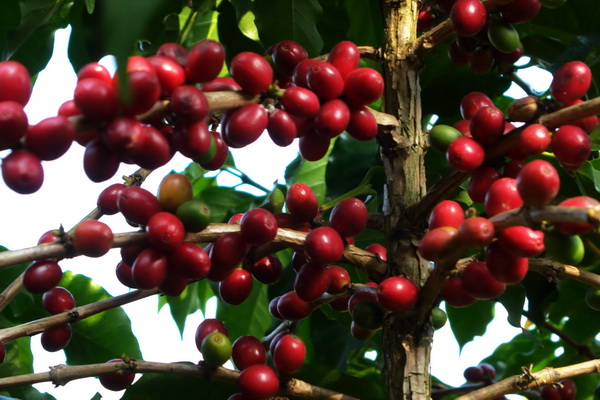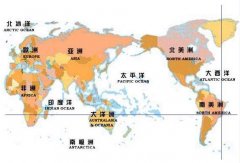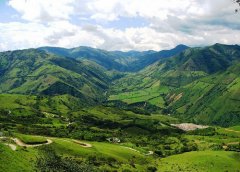The top ten coffee producing areas in the world
The American Fine Coffee Association (SCAA) Baker Association 2012 COTY-Coffees of the Year Competition ended a few days ago. 250 kinds of raw coffee beans from 26 countries in the world's major coffee producing regions took part in the competition for the 2011 / 12 award of "the world's best boutique coffee". After the professional judges blindly evaluated the taste characteristics of the participating coffee in six aspects, such as dry aroma, wet aroma, taste, flavor, aftertaste and mellow thickness, the ten coffees that won the "Best Fine Coffee in the World" award in 2011 / 12 are:
Producer name: Cooperative
Farm name: Oromia
Producing area: Oromia Region (Oromia is a district of Ethiopia, including five major coffee producing areas, Cooperative is a cooperative, and this bean is estimated to have been selected by the Oromia Coffee Cooperative)
Country of origin: Ethiopia (Ethiopia)
Processing method: Washed (washing)
Species name: Heirloom Varietal (heirloon originally means "family heirloom", which should refer to an ancient Ethiopian variety)
Score: 88.41
Producer name: Cafe Granja La Esperanza
Farm name: Cerro Azul
Production area: Trujillo
Country of origin: Colombia (Colombia)
Processing method: Washed (washing)
Species name: Geisha/35000 (Rosa rugosa)
Score: 88.25
Producer name: Rigoberto Herrera Correa
Farm name: Las Margaritas
Production area: Caicedonia
Country of origin: Colombia (Colombia)
Processing method: Washed (washing)
Species name: Geisha/22000 (Rosa rugosa)
Score: 87.84
Producer name: Adado
Farm name: Gedeo Zone, YCFCU
Producing area: South (Gedeo area, which is next to Yega Xuefei on the map)
Country of origin: Ethiopia (Ethiopia)
Processing method: Washed (washing)
Species name: Arabica (Arabica)
Score: 87.28
Producer name: Extreberto Caceres
Farm name: Cielito Lindo
Production area: Santa Barbara
Country of origin: Honduras (Honduras)
Processing method: Washed (washing)
Species name: Pacas (Pacas)
Score: 87
Producer name: Will and Grace Tabios
Farm name: The Rising Sun; Will and Grace Farms
Production area: Ka'u
Country of origin: United States, Hawaii (Hawaii)
Processing method: Semi-Washed (semi-washed)
Species name: Typica (Ironhide)
Score: 86.94
Producer name: Rigoberto Herrera
Farm name: Finca Experimental Banexport-Granja La Esperanza
Production area: Valle Del Cauca
Country of origin: Colombia (Colombia)
Processing method: Washed (washing)
Species name: Geisha (Rosa rugosa)
Score: 86.75
Producer name: Rafael Lozano
Farm name: Finca Buenavista
Production area: San Agustin, Huila
Country of origin: Colombia (Colombia)
Processing method: Washed (washing)
Species name: Caturra (Kaddura)
Score: 86.59
Producer name: Lorie Obra
Farm name: Rusty's Hawaiian
Production area: Ka'u
Country of origin: United States, Hawaii (Hawaii)
Processing method: Washed (washing)
Species name: Typica / Caturra (Tibika / Kaddura)
Score: 86.47
Producer name: Francis and Trinidad Marques
Farm name: Ali'i Hawaiian Hula Hands Coffee
Production area: Ka'u
Country of origin: United States, Hawaii (Hawaii)
Processing method: Washed (washing)
Species name: Typica / Caturra (Tibika / Kaddura)
Score: 86.41
Ethiopia occupies the second place in the top 10, but there is no specific species name. Ethiopia, the country of origin of coffee trees, is known as the "treasure trove of Arabica genes", and many varieties may not have been named yet.
Geisha was also transplanted from Ethiopia, this time on Colombian farms.

Important Notice :
前街咖啡 FrontStreet Coffee has moved to new addredd:
FrontStreet Coffee Address: 315,Donghua East Road,GuangZhou
Tel:020 38364473
- Prev

The Development trend of Fine Coffee
Boutique coffee has a rich and beautiful taste. Even if the coffee made of boutique coffee beans is not all fine coffee, it depends on whether it gives full play to the characteristics of coffee beans, whether it has a good taste, if not, it can not be called boutique coffee. As long as it is delicious coffee, coffee consuming countries are willing to pay a high price; as long as they provide delicious coffee
- Next

Lim has aromas of grass and black sugar, with bright acidity.
The best way to harvest high-quality coffee beans is to harvest them manually. That is, only mature coffee fruits are picked to prevent coffee fruits with inconsistent maturity from being picked at the same time. Because those unripe and overripe fruits will affect the balance and stability of coffee taste, boutique coffee needs to be picked frequently and carefully during harvest. Limu grew up in Ethiopia.
Related
- Beginners will see the "Coffee pull flower" guide!
- What is the difference between ice blog purified milk and ordinary milk coffee?
- Why is the Philippines the largest producer of crops in Liberia?
- For coffee extraction, should the fine powder be retained?
- How does extracted espresso fill pressed powder? How much strength does it take to press the powder?
- How to make jasmine cold extract coffee? Is the jasmine + latte good?
- Will this little toy really make the coffee taste better? How does Lily Drip affect coffee extraction?
- Will the action of slapping the filter cup also affect coffee extraction?
- What's the difference between powder-to-water ratio and powder-to-liquid ratio?
- What is the Ethiopian local species? What does it have to do with Heirloom native species?

